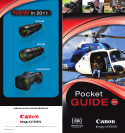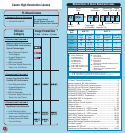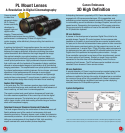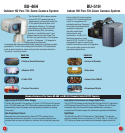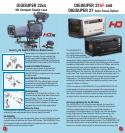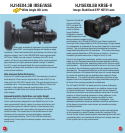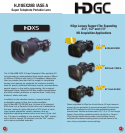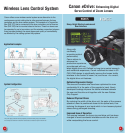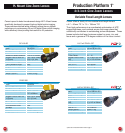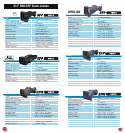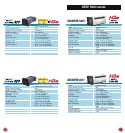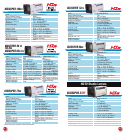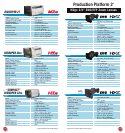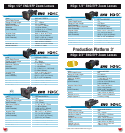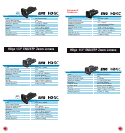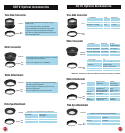
PL Mount Lenses
A Revolution in Digital Cinematography
Canon is proud
to debut two
advanced-design
4K PL-Mount
lenses specifically
developed to
support high-end
digital motion
imaging. These precision
matched lenses ensure the very highest
performance in contemporary 2K and HD digital 35mm
motion imaging, while definitively future proofing the transition to
4K production.
In seeking the highest 4K image performance, the new lens design
platform had to simultaneously optimize those parameters that
enhance the imaging attributes, while also minimizing the various
optical aberrations and distortions that might degrade the image.
New optical materials, new optical coatings, and new design
techniques were all mobilized to develop an important advance in
overall optical performance. Highly advanced computer simulation,
that could cope with the hundreds of thousands of design variables,
allowed an unprecedented degree of optimization of all contributing
imaging parameters. This sophisticated new optical platform ensured
the closest performance matching between the two lenses, minimized
alterations to that performance with changes in scene object
distances, and physically produced more compact and lightweight
products than contemporary PL mount lenses. In addition, a totally
new focus system design has virtually eliminated focus breathing.
Feature Film Origination
In the wide lens, the T2.6 maximum aperture stays totally constant
over the entire focal range, and combined with the virtual absence of
focus breathing, will be a boon to cinematographers.
The superb contrast and overall picture sharpness will maximize
the video creation capabilities of the current top-of-the-line digital
single-sensor cameras. The telephoto lens will complement the
wide in larger studios while also creating a flexible range of outdoor
shots with exceptional imagery.
Television Drama and Television Commercial Production
The focal ranges offered by the combination of these two lenses will
flexibly address most of the needs of contemporary high-end
television production. Television drama, music videos, and television
commercial production - all will achieve enhancements to their story-
telling as a consequence of short depth of field, high sensitivity,
superb contrast ratio, and excellent picture sharpness.
4
5
Canon Embraces
3D High Definition
Anticipating the boom in popularity of 3D, Canon has been actively
engaged with HD camera manufacturers, 3D rig specialists, and
enterprising content creators presently exploring 3D program origination
in moviemaking, as well as television coverage of sports, concerts, and
special events. Recognizing the importance of 3D program origination,
Canon gave priority to adoption of most of the standard HD lens series
for 3D production systems.
3D Lens Solutions
A pioneer in the development of precision Digital Drive Units for its
portable lenses, Canon's 3D control systems for lens-camera pairs
capitalize on the ability to synchronize the servo control systems within
the pair, and to then use the associated menu system to enter correction
data that ensures precision tracking for their respective zoom, iris, and
focus operations. A simple 20pin - 20pin 3D bridge cable interconnects
the stereoscopic lens pair, and special 3D software loaded into the two
Digital drive Units performs the requisite synchronization. A single
Zoom controller connected to one lens will then simultaneously control
the zoom action of both lenses. Similarly, a single Focus controller
connected to the other lens will simultaneously control the focus
operation of both lenses. The 3D software can be installed into most
standard Canon lenses at Canon service centers.
3D Lens Controllers
A special attraction of Canon's synchronous lens control system is the
use of standard rather than specialized controllers. When the 3D
software is installed in the lens drive units, all standard servo controllers
for zoom and focus will be fully compatible with Canon's stereoscopic
lens-pair, thus facilitating a significant cost-saving when deploying
standard lenses for 3D acquisition systems.
System Configuration
*1 BDC-10 conversion cable is necessary to connect between ZDJ-D02 or FDJ-D02 (18pin) and Digital Drive Lens (20pin).
*2 BDC-20 conversion cable is necessary to connect between ZDJ-P01 or FDJ-P01 (12pin) and Digital Drive Lens (20pin).



